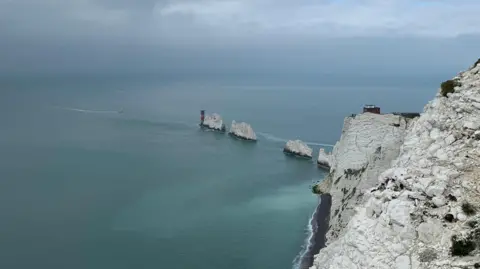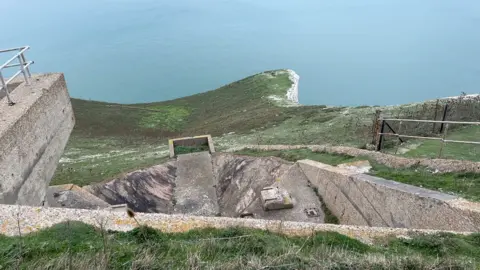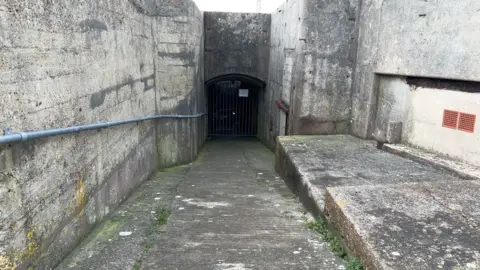Island's secret role in British space programme
 BBC
BBCA group of rocks sits in the English Channel, rising about 98ft (30m) out of the sea off the western extremity of the Isle of Wight.
The Needles are known as an iconic landmark to many, popular with tourists and one of the island's main attractions, but during the Cold War they bore witness to top secret testing.
From the 1950s to the 1970s, the Needles New Battery was a highly classified rocket testing facility, leading rocket technology in the UK.
Radio Solent's Alex Hopwood went to see it to find out what really took place - and why the location was chosen.
In the mid-19th Century, the Old Needles Battery was one of approximately 70 forts and batteries around the UK to be constructed and fitted with guns.
With an upgrade due in the following century, the New Needles Battery was built.
The structure overlooks the Needles - a row of three stacks of chalk sticking out of the sea – and is filled with stories about the island's secret rocket testing.
From 1955, a company called Saunders Roe leased the site and secretly tested the Black Knight rocket and the 44ft Black Arrow rocket, which was designed to launch the Prospero satellite into a 300-mile circular orbit.
Prospero was designed to carry data on meteorites and space erosion, the process by which moons, asteroids and planets are altered by the harsh environment of space.
In total, 22 Black Knights and four Black Arrow rockets were deconstructed at the Needles, packaged up and sent to Australia for further testing in an even more secret location.
Despite a successful launch of the Black Knight in 1958, the programme was cancelled, with the last test firing in 1971. The site was then decommissioned.
In October 1971, Black Arrow successfully launched Prospero into space.
"That's still the only satellite that Britain has manufactured, produced and launched into space," said National Trust volunteer Steve Berden.
"Prospero is still orbiting the Earth," he said. "The Wight Aviation Museum in Sandown has got equipment which tracks it - they've got it on a big screen and they can follow it."

The New Needles Battery was chosen as the secret rocket testing site because of its natural bowl shape.
It meant it was hidden away from the public and could only be seen from the sea by passing ships.
Mr Berden said: "I think some of the general public did know it was here but it was obviously kept as a top secret site."
The whole area was fenced off, with a guard house and police patrols with dogs.
"No-one would have been able to get through the site without special permission," Mr Berden added.
The rocket firings were operated on a strict time sequence and large timing clocks were placed in all manned areas so workers could get underground in time, explained Mr Berden's fellow volunteer Jo Thornton.
"When the clocks moved towards the red section, they let off bleeps every 10 seconds to warn the workers," she said.
"The whole process could be aborted at any time by pressing one button but this button wasn't just located in one position, it was located in several positions in case there was an issue."

The control room was protected by steel armoured doors, about 3in thick in some places.
Now rusting, the doors would have provided considerable protection when testing was being carried out.
Observers were able to watch the launches through circular viewing holes, filled with 8in thick glass.
Mr Berden said: "The door would be locked shut and then, if there was any kind of explosion, the people inside should be reasonably safe because it's quite a thickly constructed building and they've got views of whichever one is being fired at the time."
Once an active site with more than 200 employees, it continues to provide a window into a little-known part of the island's history and its role in Britain's space programme.
You can follow BBC Hampshire & Isle of Wight on Facebook, X (Twitter), or Instagram.
